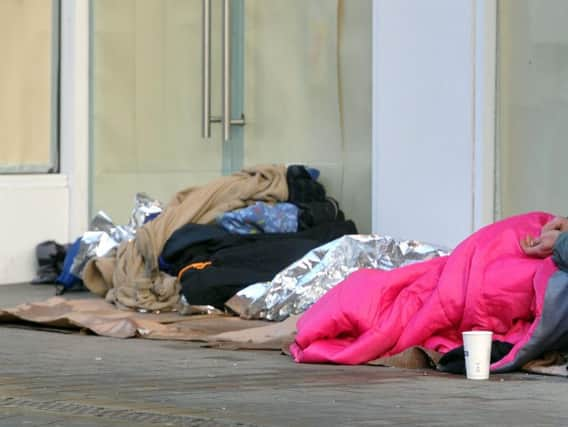Rough sleeping stats rocket by 78 per cent in just three years


Local authorities estimated there were around 4,751 rough sleepers on a single night in autumn 2017, according to data from the Ministry of Housing, Communities and Local Government (MHCLG).
It marks another steep rise from the year before, up 15 per cent from 2016 to the highest point since comparable records began in 2010.
Advertisement
Hide AdAdvertisement
Hide AdIn autumn 2014 the figure was nearly three-quarters lower, at 2,744.
Homelessness charities condemned the trend as a “catastrophe” while calling on the Government to step up its work to end destitution.
York was shown to have the highest number of rough sleepers regionally during the count, with 29 recorded – more than 13 times higher than the figure of two in 2010.
Tom Brittain, assistant director of housing and safer communities at City of York Council, said: “We and our partners work with rough sleepers year-round and, during the winter months, offer extra accommodation even if it’s a mattress on a hostel floor. Sadly not all will accept it. If there have been issues at one hostel, we give people second chances and find places at another one.”
Advertisement
Hide AdAdvertisement
Hide AdFigures during the same period in Leeds have more than quadrupled from six to 28. And in Hull, the figure has shot up from seven to 28 over the seven years.
Yorkshire and the Humber overall rose 20 per cent from 172 in 2016 to 207 last year.
Leeds City Council said providing “meaningful help” to rough sleepers is “an absolute key priority”, but due “to the many complexities involved, the on-going challenge remains” when encouraging people to take up support.
The counts collate the number of people sleeping, about to bed down or already bedded down in the open air, as well as those in buildings or locations not designed for habitation such as stairwells. They do not include people in hostels or shelters.
Advertisement
Hide AdAdvertisement
Hide AdRough sleeping continues to be most rife in London, where more than 1,137 people were recorded last year - the first time it has crept into four figures.
Polly Neate, chief executive of homelessness charity Shelter, said: “These figures expose the worst pain inflicted by our housing crisis.
“We have failed as a society when so many people are forced to sleep rough.”
Chief executive of the charity Crisis, Jon Sparkes, said: “It is truly a catastrophe that in a country as prosperous as this, more and more people are finding themselves forced to sleep in dangerous and freezing conditions, when we have evidence to show how the situation could be turned around.
Advertisement
Hide AdAdvertisement
Hide Ad“While we warmly welcome the Government’s pledges to tackle rough sleeping, including a Homelessness and Rough Sleeping Taskforce, now that we know the solutions to end rough sleeping for good we’re calling on the Government to take swift action to tackle the problem and fix it once and for all.”
An MHCLG spokesman said: “No one should ever have to sleep rough. That’s why this Government is committed to halving rough sleeping by 2022 and eliminating it altogether by 2027.
“To break the homelessness cycle once and for all, we are providing over £1 billion of funding, supporting rough sleepers with the most complex needs through a new Housing First approach and bringing in the most ambitious legislation in decades that will mean people get the support they need earlier.
“In addition, a new cross-Government taskforce supported by a panel of experts will drive forward a new strategy that will make life on the streets a thing of the past.”